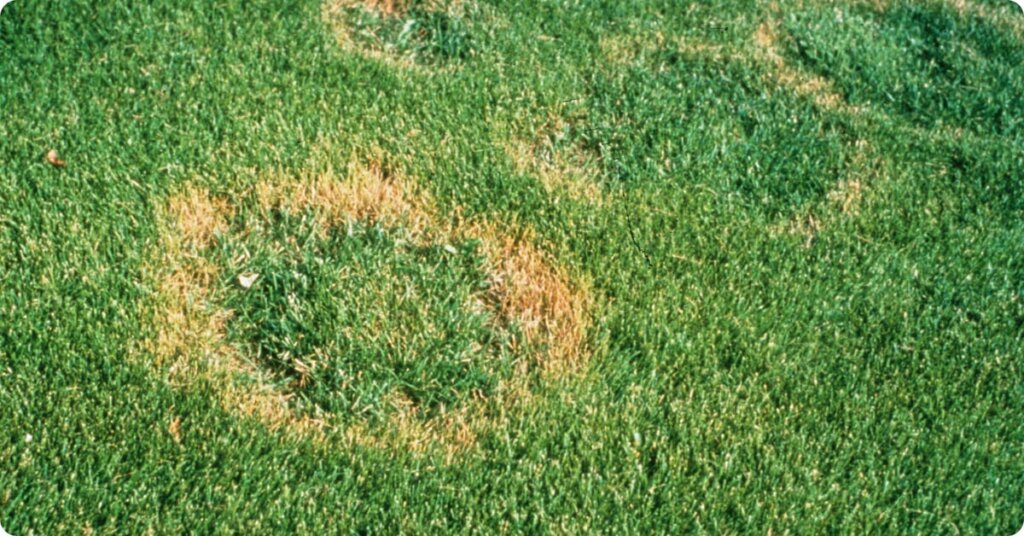Necrotic Ring Spot
Necrotic Ring Spot (Leptosphaeria korrae) is caused by a parasitic form of plant life called fungi. Fungi live in the soil, thatch and dead leaves. Necrotic Ring Spot spreads throughout the lawn in the form of spores. Wind, water, humans, and lawn equipment spread the spores. Necrotic Ring Spot becomes active during cool, wet periods in the spring and again in the fall. Thick thatch, shallow roots, poor drainage and improper mowing techniques can contribute to Necrotic Ring Spot.

What Necrotic ring spot looks like:
Necrotic Ring Spot is typically not detected until many grass plants begin to die. Small, doughnut-shaped patches of dead, yellow grass with centers of healthy green grass are the first indications. As a result of its appearance, Necrotic Ring Spot is also referred to as “frog-eye”. The patches can range from several inches to 1’-2’ in diameter. The rings form irregular patterns throughout the lawn. Damage is most evident in summer months, when the grass, stressed by heat and lack of water, dies.
How to prevent Necrotic ring spot:
Proper lawn maintenance can minimize and prevent Necrotic Ring Spot.
● Mow at the recommended height and frequency. (See Mowing)
● Irrigate to wet the root. If your lawn has shallow roots, water more frequently for a total of 1” of water per week including rainfall. Syringing your lawn mid-day on hot days can relieve heat stress. WATER SHOULD NOT BE APPLIED AT NIGHT. (See watering)
● Conduct a soil test and properly fertilize based on the results
● Do not allow thatch in excess of ½” to develop
● Aerate heavily trafficked, compacted areas and to minimize thatch
How to eradicate Necrotic ring spot:
Necrotic Ring Spot is a difficult disease to manage and may take 2 or more years to achieve satisfaction. Managing Necrotic Ring Spot requires a combination of proper maintenance practices, soil amendments, and fungicide applications. Total lawn renovation may be necessary in extreme infestations. Adam’s Healthy Lawn professions will apply a preventive fungicide treatment in late May to early June with a second application in early July. A fall preventive treatment (usually in September) can also be applied. Fungicide treatments may need to be applied for several years to control Necrotic Ring Spot. Fungicides can manage the Necrotic Ring Spot preventively, but are not effective on damaged or dead grass.
Talk to an Adam’s Healthy Lawn Expert!
